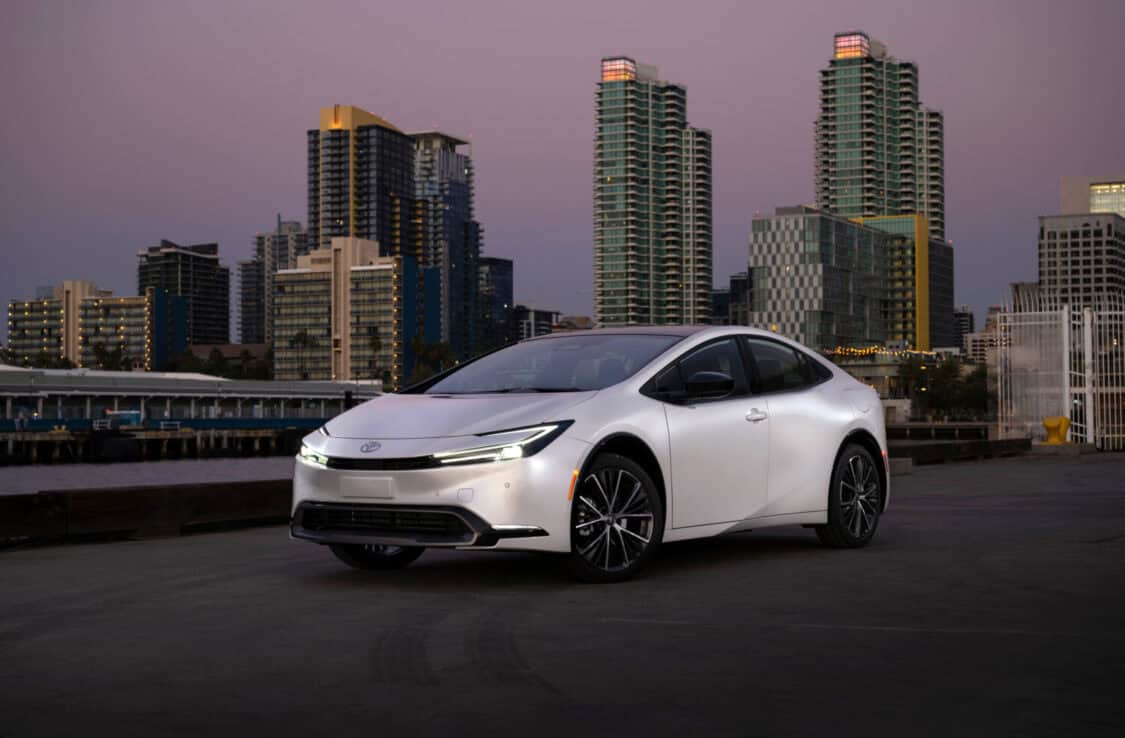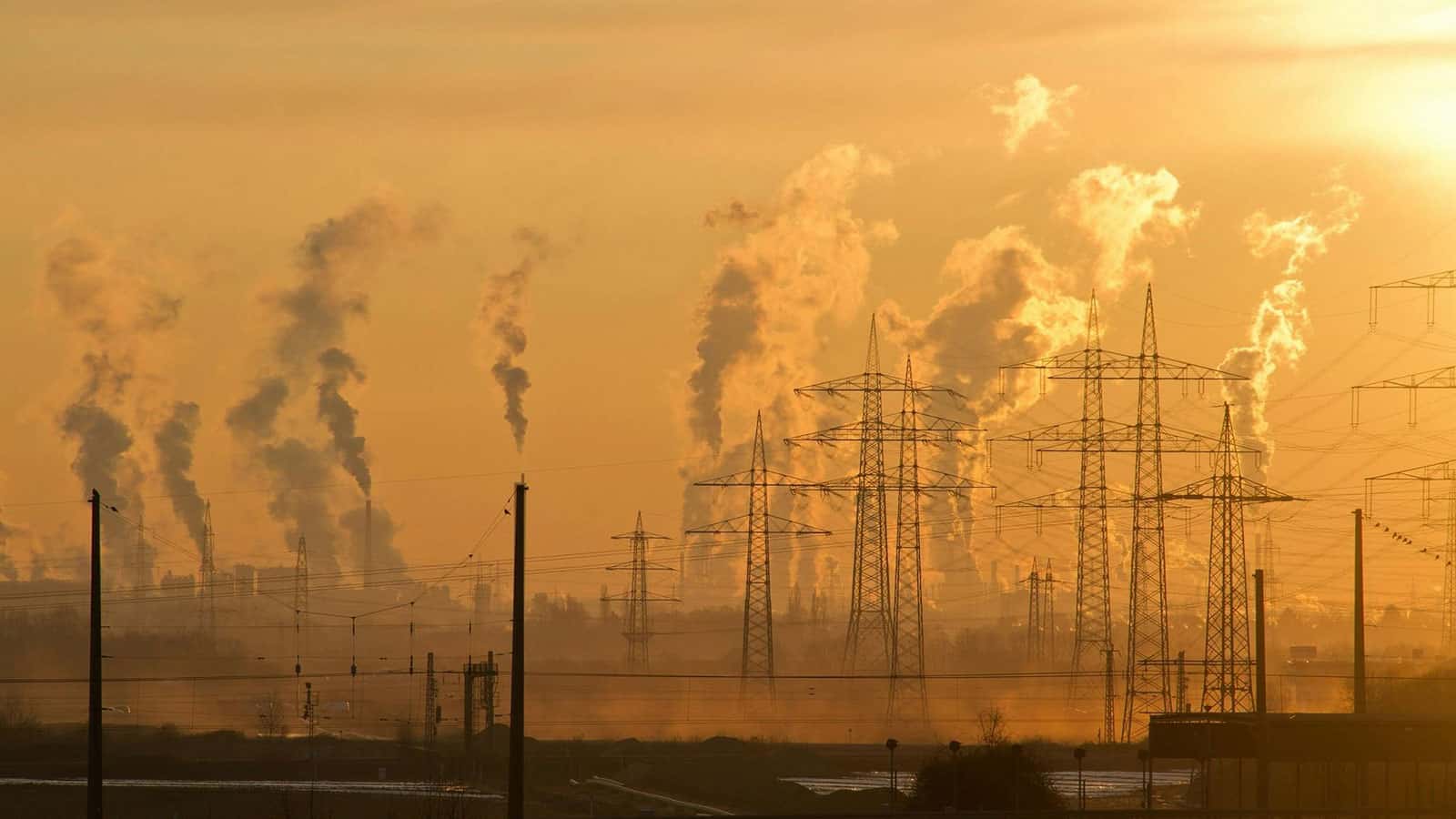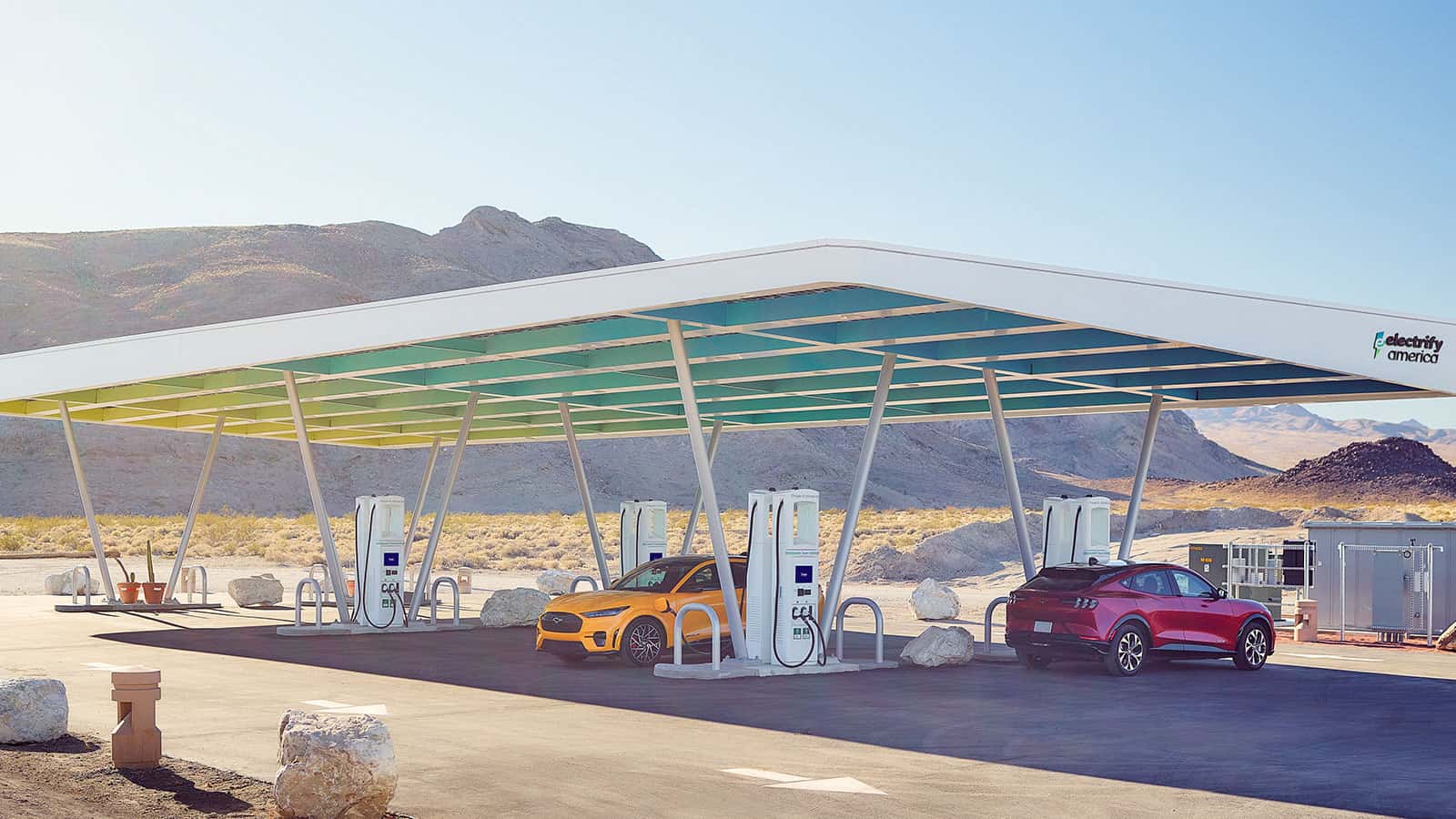- Despite misinformation to the contrary, the EPA rules do not ban gas-powered cars.
- The new rules from the EPA require automakers to build a lineup of vehicles that meet emissions standards with flexibility for ICE, PHEV, HEV, and EVs — a change from the all-electric switch in the original plan.
- Automaker lineups will be a mixture of plug-in hybrid, mild-hybrid, battery-electric, and gas-powered vehicles.
ADVERTISEMENT
The Current Narrative & Misinformation

The American Fuel & Petrochemical Manufacturers (AFPM) is worried, especially as the EPA finalizes its new rules about electric cars and the Clean Air Act. To spread misinformation about EV sales and new EPA rules about electric cars, the AFPM launched its second ad campaign in several swing states claiming the Biden administration is working to ban gas, diesel, and flex-fuel vehicles in the United States.
The AFPM misinformation campaign argues that most Americans are against banning gas-powered cars, and the Biden administration is working to ban these vehicles without the knowledge of the American public. The AFPM spent over seven figures on its first ad campaign last month.
While the Biden administration is working to reduce tailpipe emissions, is the administration working to end the production and sales of vehicles with internal combustion engines?
The quick answer is no.
The aggressive and misleading campaign from the AFPM arrived at the same time that the EPA finalized its newest ruling on emissions for light-duty and medium-duty vehicles. The new ruling is less strict than the original proposal, but it has the same aim: to cut billions of tons of tailpipe emissions to reduce environmental and health-related concerns from air pollution.
ADVERTISEMENT
The Original EPA Rules for Electric Cars to Improve Health in the U.S.

According to the original EPA report about emissions reductions, greenhouse gas emissions have been linked to health problems like “premature death … respiratory illness, cardiovascular problems, and cancer.” The health problems extend from coast to coast, especially near transportation corridors. The new EPA rules about electric cars are a response to the rapidly increasing negative effects of climate change, which have been linked to greenhouse gas tailpipe emissions. The EPA can make rules about tailpipe emissions based on the Clean Air Act established during the Nixon administration in 1970.
In April 2021, the EPA announced a new goal for a 50-52% reduction of greenhouse gas pollution by 2040, in accordance with the Paris Agreement’s goal to limit global warming to no more than 1.5 degrees Celsius by 2050.
To achieve the goal, the EPA published a proposal in May 2023 requesting that “50 percent of U.S. new vehicle sales to be zero-emission vehicles by 2030.” During this time, automakers will continue to sell vehicles with gas-powered internal combustion engines, and ICE vehicles will be on the road for many years in the future. If the EPA wants 50% of new vehicle sales to be zero-emissions vehicles, then the other 50% can be vehicles with emissions.
After searching the original 263-page proposal for the word “ban,” the only times that word appeared was in a list of articles with five discussing banning gas-powered cars in Europe, Massachusetts, and California. The Biden administration is NOT recommending a ban on gas-powered cars in the United States.
ADVERTISEMENT
The Finalized EPA Zero-Emissions EV Sales Ruling

The finalized EPA proposal is less strict, giving automakers time to ease the transition to electric vehicles. The new proposal is 1,181 pages long, and the EPA conducted a peer review with several agencies before making its final rule.
Before finalizing the rule, the EPA held several hearings to listen to stakeholders’ concerns: “EPA held three days of virtual public hearings on May 9-11, 2023, and heard from approximately 240 speakers. During the public comment period that ended on July 5, 2023, EPA received more than 250,000 written comments.”
Before finalizing the proposal, the EPA listened to all major American automakers as well as the Alliance for Automotive Innovation, the UAW, and the United Steelworkers. Many concerns were raised about jobs, raw materials, infrastructure, and technology transitions. The EPA ruling also shared mixed messages coming from manufacturers like Ford stopping construction on the Michigan EV battery plant, then announcing construction resuming on the same day.
The UAW and United Steelworkers were concerned with the original proposal’s pace. Their worries involved job disruptions and low-quality jobs, so the labor groups supported a longer period to move to a 50% reduction of greenhouse gasses. Knowing the Biden administration’s stance on union labor, it’s no surprise that the EPA listened to work-related concerns, especially after the UAW pledged its support for the President in the upcoming election. The United Steelworkers union endorsed President Biden on March 20.
Voices like the AFPM are loud, but they aren’t the only ones in the ear of the EPA. The ruling shared that many other organizations pushed the EPA for the strongest possible emissions policies. Automakers like Tesla, Rivian, and Lucid strongly supported the original proposal, as did many automotive suppliers.
ADVERTISEMENT
Rather than dictating a percentage of electric vehicles sold by 2030, the EPA adjusted the overall goal of tailpipe emissions for cars, trucks, and light-duty fleets. The tailpipe emissions reductions increase annually through 2032, so automakers will have a variety of ways to meet the fleet goals. The Table 1 goals for light-duty passenger vehicles are based on grams per mile of CO2.
The Table 2 goals for medium-duty vehicles (like Amazon delivery vans) are also based on grams per mile of CO2.
To achieve the new emissions goals, automakers can take a variety of steps — none of which include a total ban on internal combustion engines. Automakers can improve emissions in their ICE vehicles, and they can mix up electrified technologies, adding more hybrid (HEV), plug-in hybrid (PHEV), and battery-electric vehicles (BEV). This new goal is a far cry from the original plan of 50% electrification by 2030.
The EPA created Table 3 to provide a few suggested pathways for automakers to achieve the 2032 emissions goals. Automakers will have to make changes to their vehicle lineups and powertrains to achieve the 2032 goals — but they will not have to end production of gas-powered vehicles. To achieve the EPA emissions goals, automakers will need between 35% and 56% battery electric vehicles with 17% to 29% ICE vehicles in the lineup. The rest of the lineup will be filled with HEV and PHEV models, as shown in Table 3.
The main purpose of reducing tailpipe emissions and greenhouse gasses is to improve our way of life in the United States. Thanks to the plethora of highways in the United States, estimates show that at least 41 million U.S. residents live near high-traffic roadways. Living near high-traffic roadways can cause health problems like asthma, acute respiratory infections, lung cancer, preterm birth, inflammation, and neurological and cognitive problems.
ADVERTISEMENT
EPA Sunsetting Greenhouse Gas Credits
While it may seem like the EPA and the Biden administration caved to the auto and petroleum industries, it did sunset several greenhouse gas credit programs. The EPA is limiting air conditioning efficiency credits in light-duty vehicles beginning in 2027 — for example, BEVs don’t earn air conditioning credits because the AC systems do not create tailpipe emissions as they do in ICE vehicles.
The EPA is also sunsetting banking, trading, and averaging greenhouse gas credits. In previous years, automakers could bank credits for surplus emissions, trade emissions credits with other automakers, and average emissions using the formula: Emission Factor x Activity Data.
Automakers will not be able to use off-cycle greenhouse gas credits — these are credits given to vehicles that use technologies that aren’t a part of the powertrain. For example, some vehicles have active climate seating technologies that heat or cool the seat without affecting tailpipe emissions. Automakers will no longer be able to use features as credits against emissions readings, per the new climate regulations toward a broader EV transition.
Opponents Fighting EVs and Emissions Reforms with Misinformation

This brings us back to the AFPM misinformation regarding ICE vehicles and fuel use. The organization supports companies involved in manufacturing and refining petrochemicals for use in cars, trucks, and plastics. The EPA’s emissions goals aren’t punishments for automakers and people who drive gas-powered cars. The goals are to help improve the quality of life in the United States and to protect the environment for current and future generations.
But, groups like the AFPM are doing what they can to preserve the industries they represent. Unfortunately, they are doing it through misinformation. The EPA ruling includes these exact words on pages 179-180: “[C]ommenters err in characterizing this rule as a ban on gasoline engines or a zero-emission vehicle mandate. That is false as a legal matter and a practical matter. As a legal matter, this rule does not mandate that any manufacturer use any specific technology to meet the standards in this rule; nor does the rule ban gasoline engines.”
Along with the lies about the EPA emissions rules, misinformation abounds about EV sales being down. In 2023, drivers in the U.S. bought 1.2 million EVs. Ford reported an 81% jump in EV sales and a 32% jump in hybrid models in February 2024 compared to February 2023. In January 2024, EV registrations rose 15% compared to registrations in January 2023.
While EV sales might not reach the same growth percentage as they did in 2023, sales aren’t slowing. They are growing, just at a slower clip. Experts at Bloomberg project about 1.9 million EVs will be sold in 2024. Some analysts expect that automakers will sell one million more EVs in 2024 compared to 2023. New models are showing up on dealership lots. Used EVs are also in demand, as my local Kia dealership asked if I’d like to sell them my 2023 Kia EV6 because they can’t keep them on the lot.
Coming to Terms With Electrified Vehicles & Renewable Fuels
The new EPA rules about electric cars and emissions aren’t designed to be a punishment. The rules are a response to a changing ecosystem. It’s no secret that fossil fuels won’t last forever, and the global community needs real solutions. At this time, electrified vehicles are a feasible solution. Rather than denying the problem and pushing fossil fuels to the limit, humans should embrace technologies that can make our world a safer and healthier place to live.
Not a Perfect Solution, But a Feasible Start

No solution is perfect, but electric vehicles use fewer resources and provide reliable (and enjoyable) transportation. They are easy to care for, relatively quick to charge, and cheap to fill. Innovators continue to improve the battery technology and charging infrastructure.
A few years ago, EV options were minimal and charging infrastructure was limited. Today, it’s possible to travel across the United States in an EV! The technology will only get better, and the EPA rules will push automakers to build better, fuel-efficient, low or zero-emissions vehicles that create jobs we haven’t even dreamed of yet.
The Parable of the Pistachio

A friend shared this analogy with me: Imagine you’re in a room full of pistachios. You start eating them. As you eat them up, you’ll soon have a room full of shells, and eventually, you’ll have to put more effort into finding the nuts. The smaller nuts will move toward the floor, so you’ll be stuck with low-grade pistachios, and you have to work harder to find them. Once they’re gone, you’re not getting any more, but you’re left with a room full of debris that isn’t edible.
Think of the pistachios as fossil fuels, and the shells are the emissions. Make sense? This is why we need renewable fuel, and the new EPA rules for electric cars are a good thing for the United States and the rest of the world — even if they are softened a bit from the original plans.
When it comes to climate change, we need all the help we can get — otherwise, we’ll be standing in a room full of empty pistachio shells.
ADVERTISEMENT

FEATURE IMAGE: PIXABAY
FTC: We use income-earning auto affiliate links. Learn more.





























